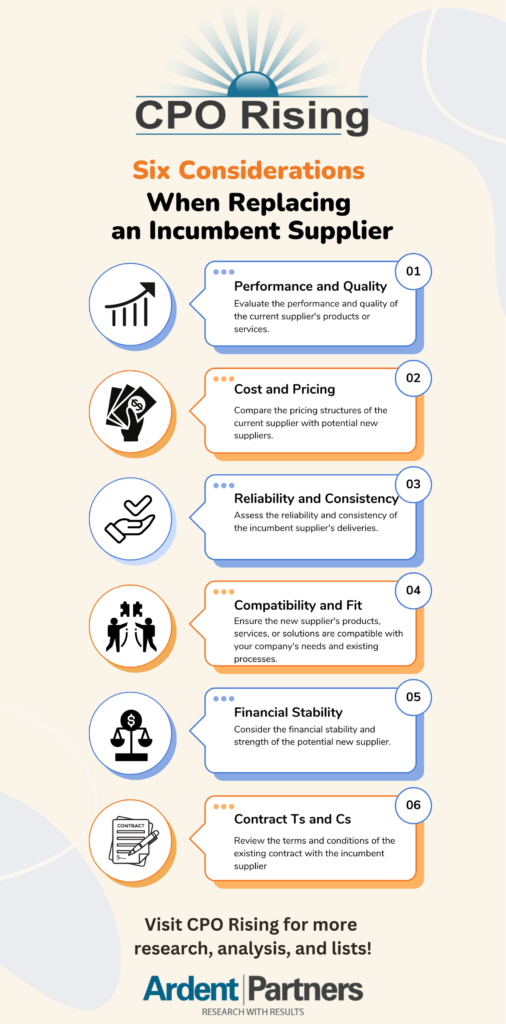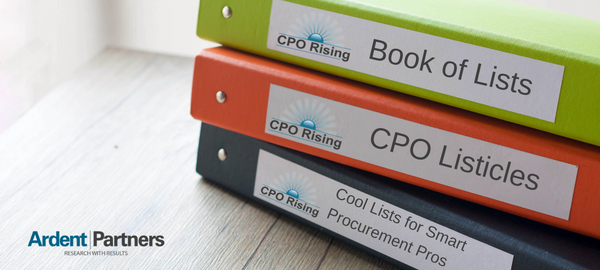Fridays (in 2023) means that it’s time for another CPO Rising Listicle. Each list will include a variety of procurement tips, trends, insights, research, lists, strategies, and/or recommendations designed to help procurement teams improve operations. We’ll also include a summary graphic for you to share with your team.
In my years as a strategic sourcing consultant, I was continually amazed by how much money many of my clients would choose to leave on the table rather than switch to a new supplier. The typical scenario would have me run a successful eSourcing event that identified 15%-20% savings from a new supplier. I’d draw up a contract award recommendation memo and then move on to the next project. Months later I would revisit with the client only to find out that they had not taken my recommendation but stayed with the incumbent who offered only a 5% savings. Risk aversion is prevalent in the corporate world. I hope those of you reading this choose to be bold in your sourcing decisions.
To help you along, when replacing an incumbent supplier, here are several important considerations that should be taken into account to ensure a smooth and successful transition. These considerations can vary based on the specific industry and business context, but the following six factors are generally important:
- Performance and Quality: Evaluate the performance and quality of the current supplier’s products or services. Identify any issues or shortcomings that may have led to the decision to seek a replacement. The new supplier should demonstrate a track record of consistent high-quality offerings to meet your business needs.
- Cost and Pricing: Compare the pricing structures of the current supplier with potential new suppliers. Consider not only the initial costs but also any long-term cost implications. It’s important to strike a balance between cost savings and maintaining a reasonable level of quality.
- Reliability and Consistency: Assess the reliability and consistency of the incumbent supplier’s deliveries. A new supplier should have a proven track record of meeting deadlines and fulfilling orders promptly to avoid disruptions to your operations.
- Compatibility and Fit: Ensure that the new supplier’s products, services, or solutions are compatible with your company’s needs and existing processes. An ideal supplier should align with your business goals and be able to adapt to any specific requirements you may have.
- Financial Stability: Consider the financial stability and strength of the potential new supplier. A financially secure supplier is less likely to face financial issues that could impact their ability to deliver on time or meet your long-term needs.
- Contract Terms and Conditions: Review the terms and conditions of the existing contract with the incumbent supplier, including termination clauses and notice periods. Ensure that you have a clear understanding of any legal obligations and implications involved in switching suppliers.

In addition to these six considerations, it’s also essential to conduct thorough research, seek feedback from supplier references, and possibly visit the facilities of potential new suppliers. Conducting a comprehensive evaluation will increase the likelihood of a successful transition to a new supplier.
RELATED RESEARCH
CPO Rising Listicle: Four Most Important Things to Have on Hand When Negotiating a Supplier Contract
CPO Rising Listicle: 10 Essential Elements to Creating a Supplier Contract
CPO Rising Listicle: Six Things to Help Prepare for a Supplier Negotiation
New Innovations Drive Contract Solutions

